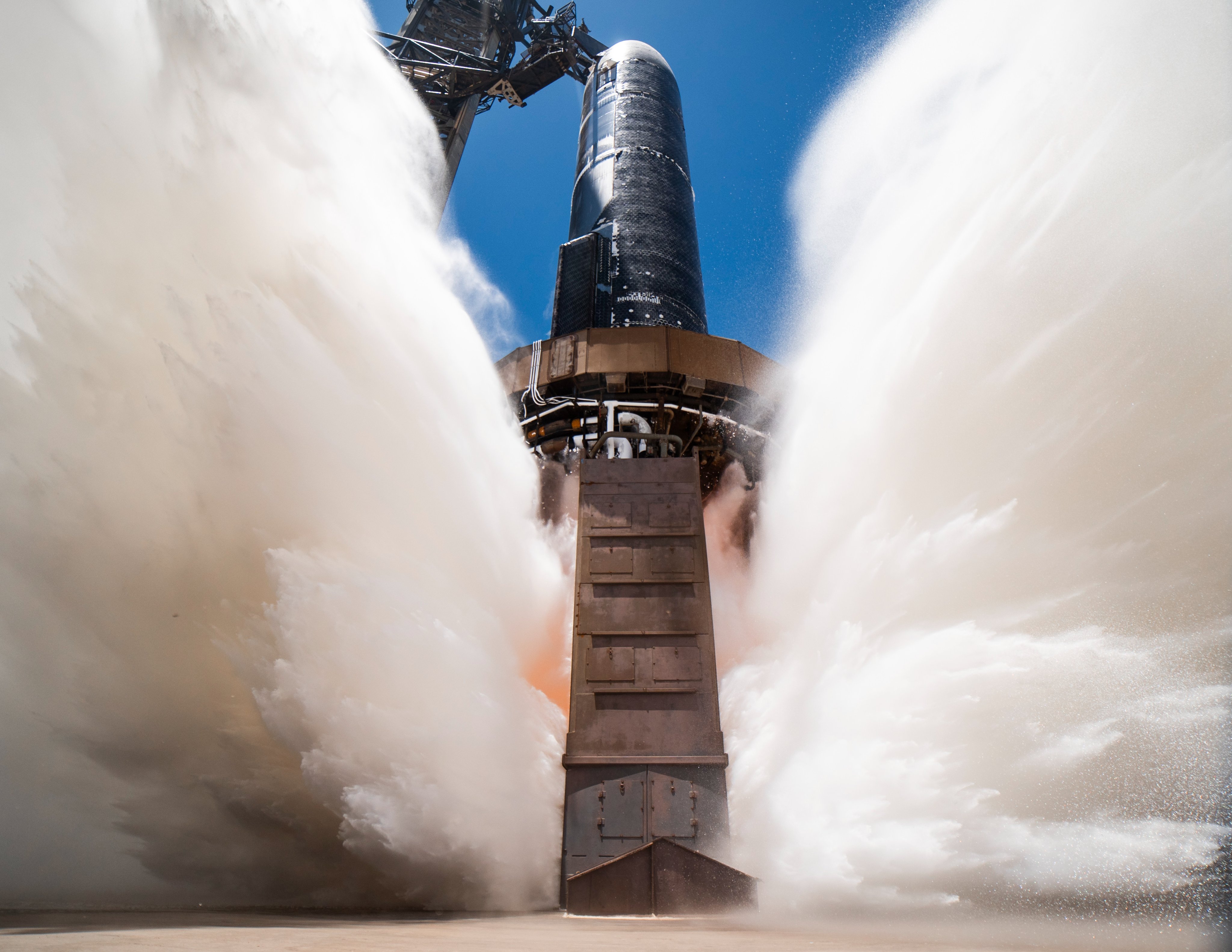Starbase, Texas – In a significant milestone for SpaceX, the company successfully conducted a single-engine static fire test of the Starship rocket on Pad 1 at its Starbase facility. This test, part of the ongoing development of the next-generation spacecraft, marks a crucial step toward demonstrating the rocket's in-space burn capability, bringing SpaceX one step closer to realizing its vision of interplanetary travel.
The static fire, which took place on 31 Jul, involved firing a single Raptor engine of the Starship prototype while the vehicle remained securely tethered to the ground. The test focused on simulating the engine's operation during an in-space burn, a critical function needed for interplanetary missions, including future trips to the Moon, Mars, and beyond.
A Step Toward Interplanetary Exploration
The successful test highlighted the reliability and power of the Raptor engine, one of the most advanced rocket engines developed to date. SpaceX engineers carefully designed this test to replicate the conditions that would occur when the Starship is in orbit, providing valuable data on how the rocket’s propulsion system functions during a real mission.
Elon Musk, the founder of SpaceX, shared his excitement about the test in a recent tweet: "Another step closer to making life multiplanetary. Starship will enable Mars and beyond."
Key Features of the Test
-
Single-Engine Focus: The test aimed to evaluate the performance of a single Raptor engine during a controlled burn, simulating the conditions that Starship would face during deep space operations.
-
Pad 1 at Starbase: This is the same pad used for many previous SpaceX launches, marking it as an iconic location for testing and future orbital flights.
-
Data-Driven Progress: The test produced valuable data on engine efficiency, heat resistance, and propulsion performance, critical to refining the Starship system for long-duration space travel.
Looking Ahead
This static fire test comes just weeks after SpaceX's successful high-altitude flight of the Starship SN series, underscoring the company's rapid development cycle and its drive to push the boundaries of rocket technology. With plans for both crewed and uncrewed missions to the Moon and Mars, the in-space burn demonstration is one of many steps that will pave the way for future deep-space exploration.
As SpaceX continues to test and refine its Starship program, the company is solidifying its position as a leader in the race for space exploration. The next few months are expected to bring further tests, including potential orbital launches, as SpaceX gears up for what could be humanity’s first steps toward becoming a multi-planetary species.
About SpaceX
SpaceX is an American aerospace manufacturer and space transportation company founded by Elon Musk in 2002. With the goal of reducing space transportation costs and enabling the colonization of Mars, SpaceX has revolutionized the space industry with innovations like the Falcon rockets and the Dragon spacecraft. The development of Starship is part of SpaceX’s long-term vision for interplanetary travel.










Leave a comment